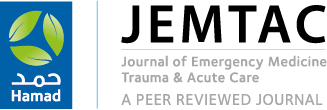-
oa Effects of Aloe vera extract alone and fermented with Bifidobacterium lactis on in vitro antimicrobial activity and on lipid profile in rabbits with diarrhea induced by Candida spp
- Source: Journal of Emergency Medicine, Trauma and Acute Care, Volume 2024, Issue 6 - Al-Bayan University Scientific Conference, Nov 2024, 13
-
- 23 February 2024
- 15 April 2024
- 10 October 2024
Abstract
The aim of this study was to prepare a therapeutic combination of probiotics from Bifidobacterium lactis bacteria and aqueous Aloe vera extract against Candida fungi by isolating Candida fungi from people with diarrhea, diagnosing them, preparing the aqueous Aloe vera extract, and fermenting it using Bifidobacterium lactis bacteria isolated from dairy products. The study also aimed to determine the potential of this combination as a probiotic inside and outside the body, and to examine its resistance to bile salts and acidity at different concentrations. The bacteria showed good growth and acid resistance at all concentrations of bile salts, which ranged between 0.1 and 0.7. The best growth was at pH = 7. The inhibitory role of the fermented extract against Candida isolates, and its effectiveness in reducing cholesterol levels, TG, LDL, HDL, and VLDL were evaluated. The results of administering the Candida fungus to rabbits, which causes diarrhea, appeared after a period of 5–7 days and were manifest in diarrhea, paleness, and lethargy compared to the control group. The results showed an increase in cholesterol, TG, LDL, and VLDL levels (25.7, 73.3, 128.50, and 102.25, respectively) during infection compared with their values in the negative control group. The corresponding values of the negative control group were 20.8, 35, 104, and 102.25, respectively. The results indicated a decrease in HDL levels (26.75) compared with those of the control group (47.67). A significant decrease in cholesterol, TG, LDL, and VLDL levels (89.25, 88.33, 30.15, and 17.6, respectively) was observed when compared with those of the infected group (25.7, 73.3, 128.50, and 102.25, respectively). There was an increase in HDL levels (41.50) compared with those of the infected group (26.75).



